Jim Morrison

In the early '70s, Jim Morrison and The Doors shifted from their earlier success, marked by a darker, more introspective sound. After Morrison’s notorious Miami indecency trial in 1969, he seemed increasingly disillusioned with fame. He relocated to Paris in 1971, where he focused on poetry and distanced himself from the band.
Meanwhile, The Doors released L.A. Woman, their last album with Morrison, featuring blues influences and hits like “Riders on the Storm.” Shortly after the album’s release, Morrison was found dead in Paris at age 27. The band continued briefly without him but disbanded in 1973.
Watergate
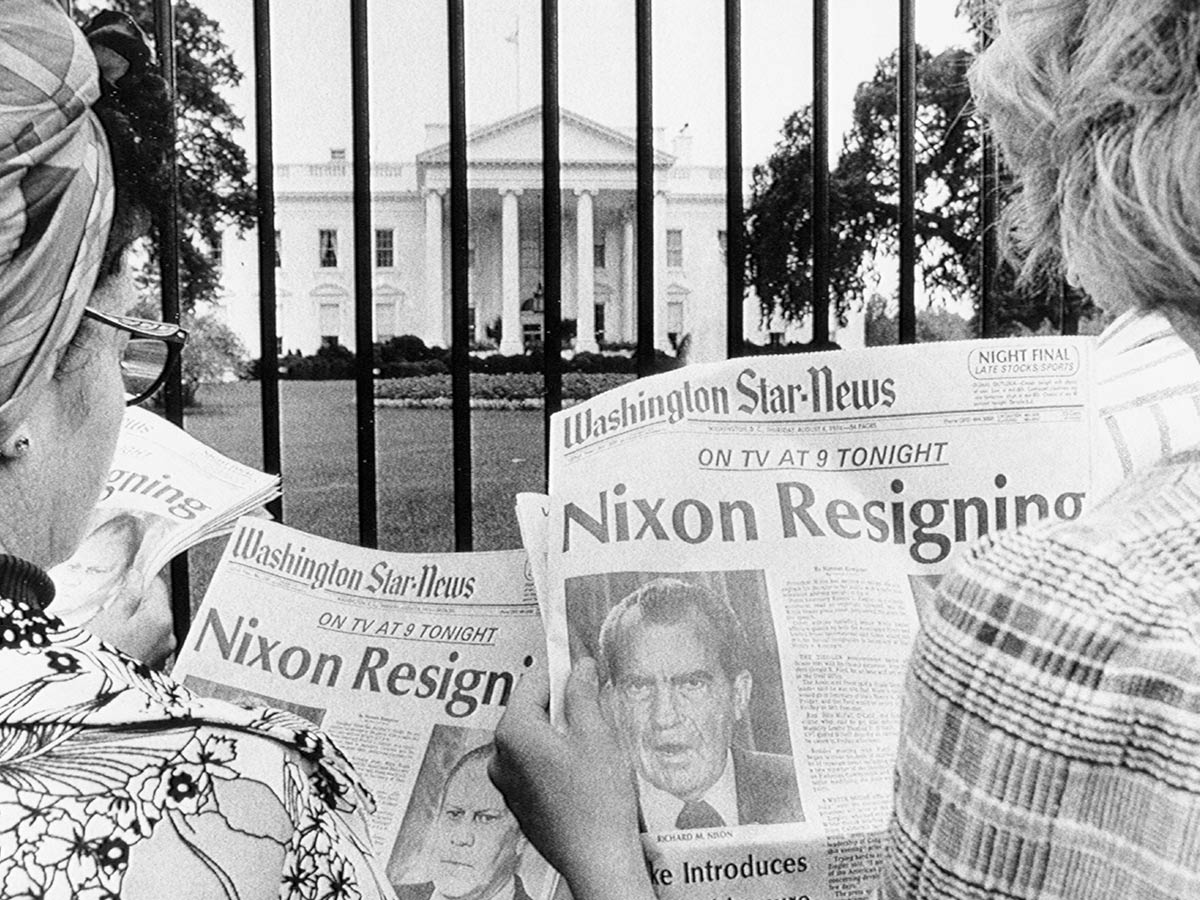
The Watergate scandal began in 1972 when five men were caught breaking into the Democratic National Committee headquarters at the Watergate complex, with ties linking them to President Richard Nixon’s re-election committee. Subsequent investigations uncovered widespread abuses of power and cover-up attempts by high-level officials.
When Nixon’s secret tapes revealed his involvement in obstructing justice, it led to his resignation in 1974, making him the only U.S. president to resign from office. The scandal eroded public trust in government, spurred new transparency laws, and invigorated investigative journalism. Politically, it left lasting skepticism toward elected officials through the late '70s and beyond.
The Death of Elvis

Elvis Presley, the “King of Rock and Roll,” died on August 16, 1977, at age 42 from heart failure, linked to his deteriorating health and prescription drug abuse. His sudden death shocked fans worldwide, highlighting the dangers of fame and excess.
This loss marked the end of an era, as Elvis had been a cultural icon since the 1950s, symbolizing youth rebellion and American pop culture. The outpouring of grief was immense, with thousands gathering at Graceland. His death underscored growing concerns about celebrity lifestyles in the '70s and fueled interest in rock nostalgia and the roots of American music.
Studio 54

Studio 54 opened in 1977 in New York City and quickly became the epicenter of 70s disco culture, famous for its wild parties, celebrity guests, and exclusive door policy. Owners Steve Rubell and Ian Schrager created a hedonistic atmosphere, drawing stars like Andy Warhol, Bianca Jagger, and Mick Jagger, who partied alongside ordinary clubgoers lucky enough to get past the velvet ropes.
Known for its outrageous, immersive decor and freedom of expression, Studio 54 symbolized the decadence and escapism of the disco era. Its peak was brief; legal troubles led to its closure in 1980, marking the end of disco's reign.
Bianca Jagger
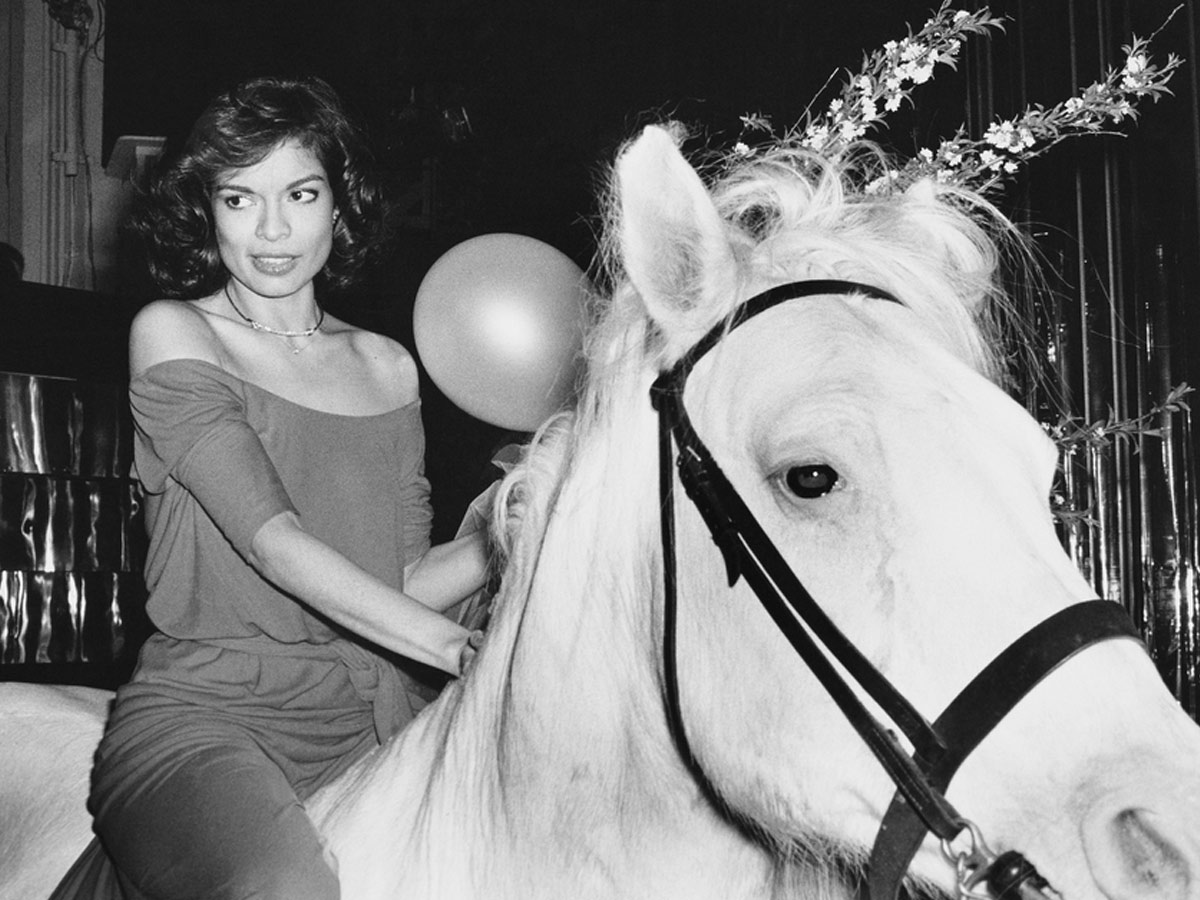
Bianca Jagger, actress, model, and socialite, became an icon of Studio 54’s decadent glamour, most famously riding a white horse through the club on her birthday in 1977. Wearing a sleek red dress, Jagger captivated partygoers as she was led atop the horse, embodying the club's opulent, surreal vibe.
This moment was both spontaneous and theatrical, curated by Studio 54’s owners to enhance the club’s mythos. The image of Jagger on horseback remains legendary, capturing her status as a muse of the '70s and symbolizing Studio 54's era-defining blend of celebrity, spectacle, and excess.
The Death of Coco Chanel

Coco Chanel, the legendary French fashion designer, died on January 10, 1971, at 87 in her suite at the Ritz Hotel in Paris. Chanel revolutionized women’s fashion with her chic, minimalist style, emphasizing comfort and elegance over restrictive designs. Her death marked the end of an era in high fashion.
Chanel’s funeral took place at La Madeleine Church in Paris, attended by celebrities, friends, and fashion icons who admired her influence. The mourners wore Chanel-inspired outfits as a tribute. Her passing solidified her legacy as one of the most transformative figures in fashion, with her influence enduring worldwide.
Carol Burnett and Joe Hamilton

In 1972, Carol Burnett and her husband Joe Hamilton won an Emmy for The Carol Burnett Show, a groundbreaking variety show that blended sketch comedy, musical numbers, and memorable characters. As executive producer, Hamilton played a crucial role in shaping the show’s innovative format and supporting Burnett’s creative vision.
The Emmy win underscored the show’s popularity and critical acclaim, celebrating its impact on television comedy. Known for its warmth and humor, The Carol Burnett Show became a cultural touchstone, helping redefine American comedy and showcasing Burnett’s talent, which made her one of the most beloved figures in entertainment.
The Jackson 5
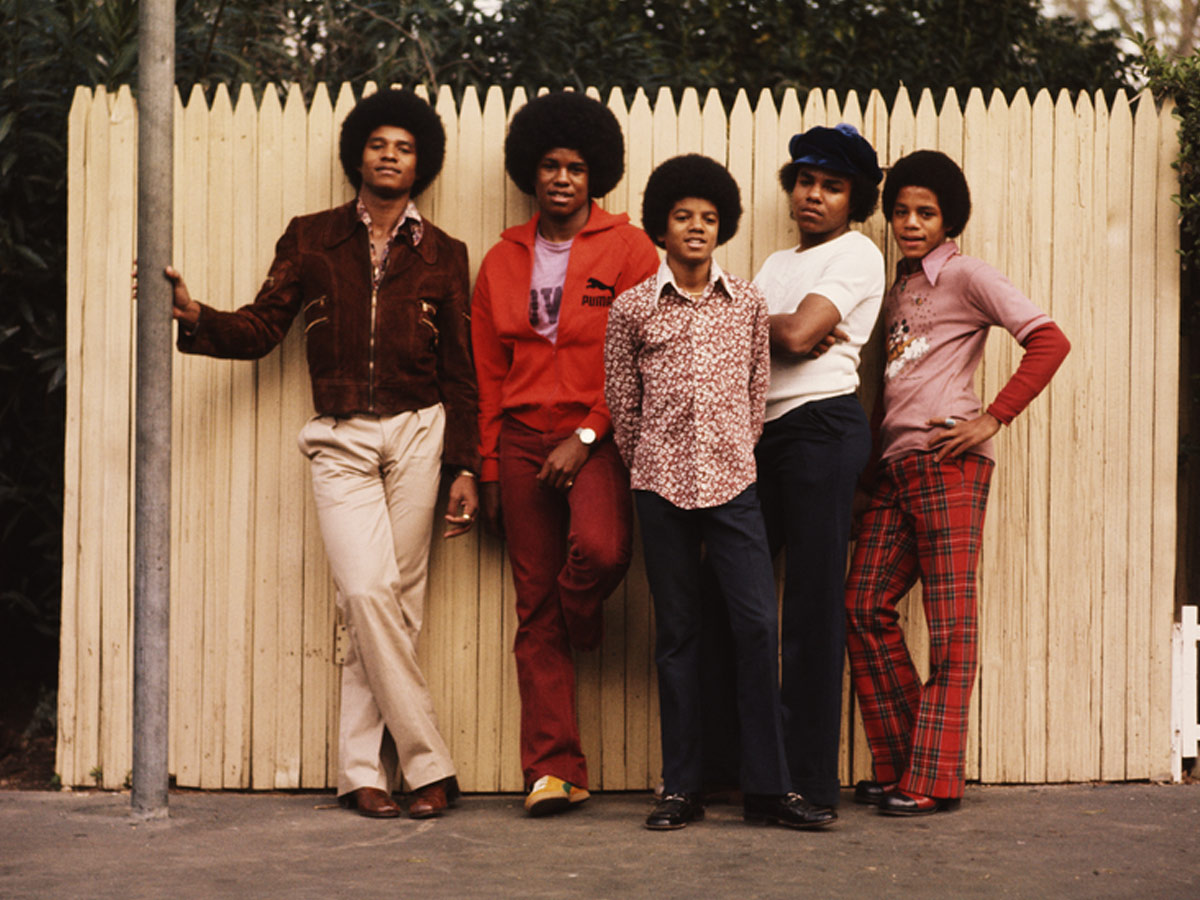
The Jackson 5, a Motown pop-soul group of five brothers led by a young Michael Jackson, skyrocketed to fame in the early 1970s with hits like “I Want You Back,” “ABC,” and “I’ll Be There.” Known for their vibrant performances and catchy sound, the Jackson 5 captivated audiences and became teen idols.
Their success helped Motown appeal to a younger, mainstream audience and made Michael Jackson a standout talent. By the mid-'70s, the group transitioned to Epic Records as "The Jacksons," exploring creative control. This period set the stage for Michael’s eventual solo career, marking the end of an era.
Madonna

In the early 70s, Madonna attended Rochester Adams High School in Michigan, where she stood out for her ambition and unique personality. Known for her academic focus and strong work ethic, she was a straight-A student involved in cheerleading and dance, and she earned a reputation as a nonconformist.
Madonna often challenged norms with her style and behavior, foreshadowing her future rebellious image. Her interest in dance grew under teacher Christopher Flynn’s mentorship, who encouraged her to pursue a performing career. After graduating in 1976, she briefly attended the University of Michigan before moving to New York to chase fame.
John Lennon and Yoko Ono

In the 1970s, John Lennon and Yoko Ono became prominent voices in the anti-war movement, blending art and activism. They launched their “Bed-Ins for Peace” in 1969, protesting the Vietnam War by inviting the press into their hotel rooms for interviews while staying in bed.
In 1971, Lennon’s song “Imagine” became an anthem for peace. The couple also held rallies, like the “War Is Over” campaign, displaying billboards worldwide to promote peace. Their activism attracted government attention, with Lennon facing threats of deportation. Despite this, they continued advocating for nonviolence, uniting counterculture communities and inspiring anti-war movements worldwide.
Reproductive Rights
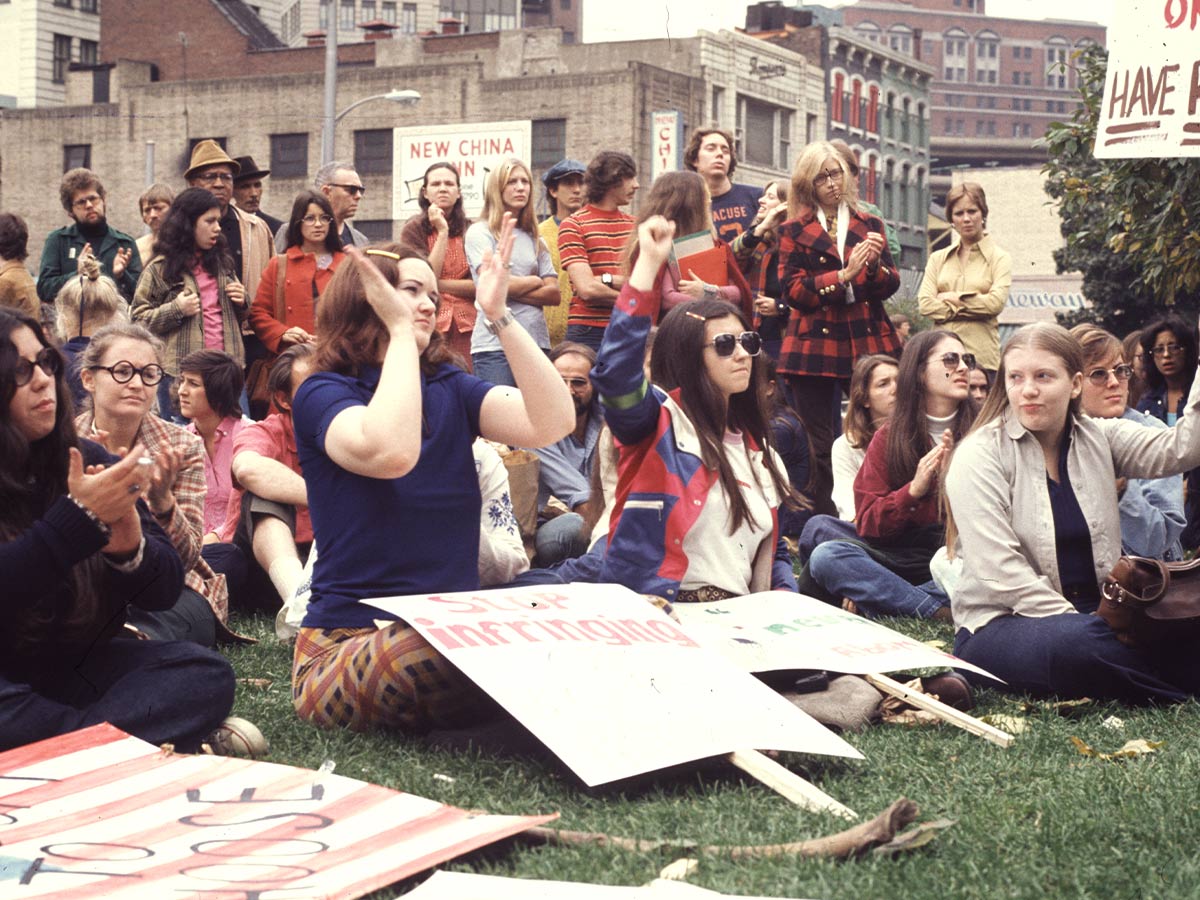
The reproductive rights movement in the U.S. gained significant momentum in the 1970s, primarily focused on expanding access to contraception and abortion. In 1973, the landmark Supreme Court case Roe v. Wade legalized abortion nationwide, ruling it a constitutional right under privacy protections.
This decision empowered women to make choices about their reproductive health but also ignited opposition, sparking the pro-life movement. Meanwhile, activists worked to increase access to birth control, which had only recently been legalized for unmarried women. These changes fueled broader women’s rights efforts, emphasizing bodily autonomy and marking the 70s as a pivotal decade in reproductive freedom.
The Brady Bunch

The Brady Bunch, premiering in 1969, became a defining family sitcom of the 1970s. Created by Sherwood Schwartz, it depicted the blended Brady family—six children and their parents, Mike and Carol—navigating lighthearted issues in a wholesome, comedic style.
Though initially receiving lukewarm reviews and modest ratings, the show gained immense popularity in syndication, especially among younger audiences. Its iconic episodes, catchy theme song, and relatable characters cemented its status as a cultural touchstone. By the mid-'70s, The Brady Bunch inspired spin-offs, animated series, and merchandise, becoming an enduring symbol of American pop culture and family life.
Life in Manhattan

Manhattan in the 1970s was a place of contrasts, marked by both vibrant culture and urban decay. Crime rates were high, and the city faced financial crises, leading to cuts in essential services. Yet, the gritty atmosphere fueled creative movements in art, music, and fashion.
Downtown, artists and musicians, like those at CBGB, pioneered punk, while the disco scene flourished at clubs like Studio 54. Neighborhoods like SoHo attracted emerging artists, transforming old industrial spaces into lofts and studios. Manhattan was a hub for activism and counterculture, and despite its challenges, the city’s raw energy defined a generation.
The Opening of Disney World

Disney World opened on October 1, 1971, in Orlando, Florida, marking the start of what would become the world’s largest and most-visited entertainment complex. Initially, it featured the Magic Kingdom, echoing the design and charm of Disneyland in California but on a grander scale.
Visionary Walt Disney, who had passed away in 1966, had conceived the park to include immersive, themed lands beyond traditional amusement rides, creating a self-contained fantasy world. The opening was met with overwhelming excitement, attracting visitors nationwide. Disney World’s success spurred further expansions, such as EPCOT, and helped transform central Florida into a major tourist destination.
World Trade Center Under Construction
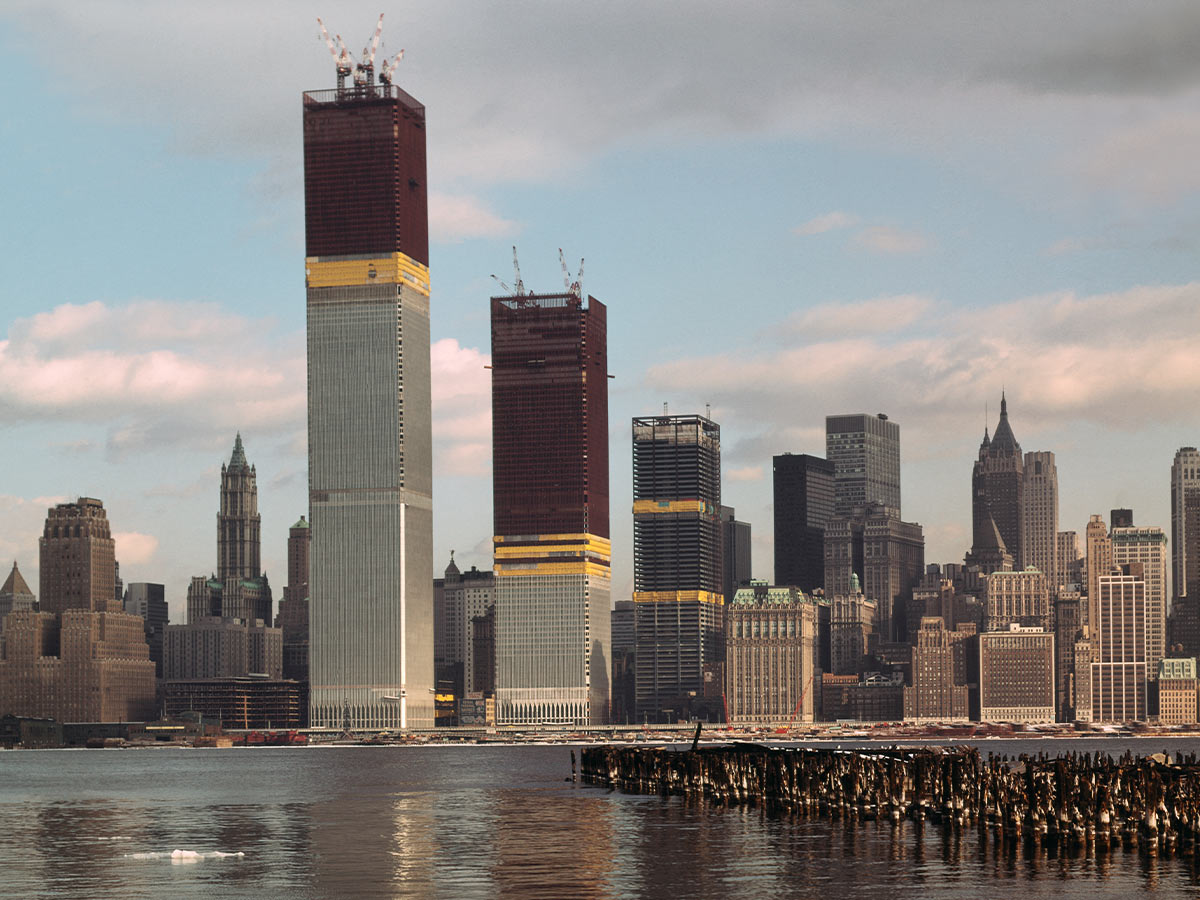
Construction of the World Trade Center began in the 1960s and continued through the early '70s, with the North Tower completed in 1970 and the South Tower in 1973.
Designed by architect Minoru Yamasaki, the towers were marvels of modern engineering, using a “tube-frame” structural design to achieve their unprecedented height. Built by the Port Authority of New York and New Jersey, the towers symbolized New York’s economic power and optimism. Despite initial criticism over their stark design and impact on the skyline, the 110-story towers quickly became iconic, attracting businesses, tourists, and reshaping Lower Manhattan’s economic landscape.
Food Price Protests

In the 1970s, food prices in the U.S. surged due to a combination of global inflation, poor harvests, and the 1973 oil crisis, which raised transportation costs. This led to steep increases in the cost of essentials like meat, eggs, and produce, straining household budgets.
In 1973, housewives in cities like Boston and Los Angeles organized protests and even a meat boycott, demanding lower prices and transparency on food costs. Their efforts gained national attention, highlighting economic pressures on everyday families. These protests marked a shift toward grassroots consumer activism, drawing attention to issues of inflation and economic inequality.
Mia Farrow
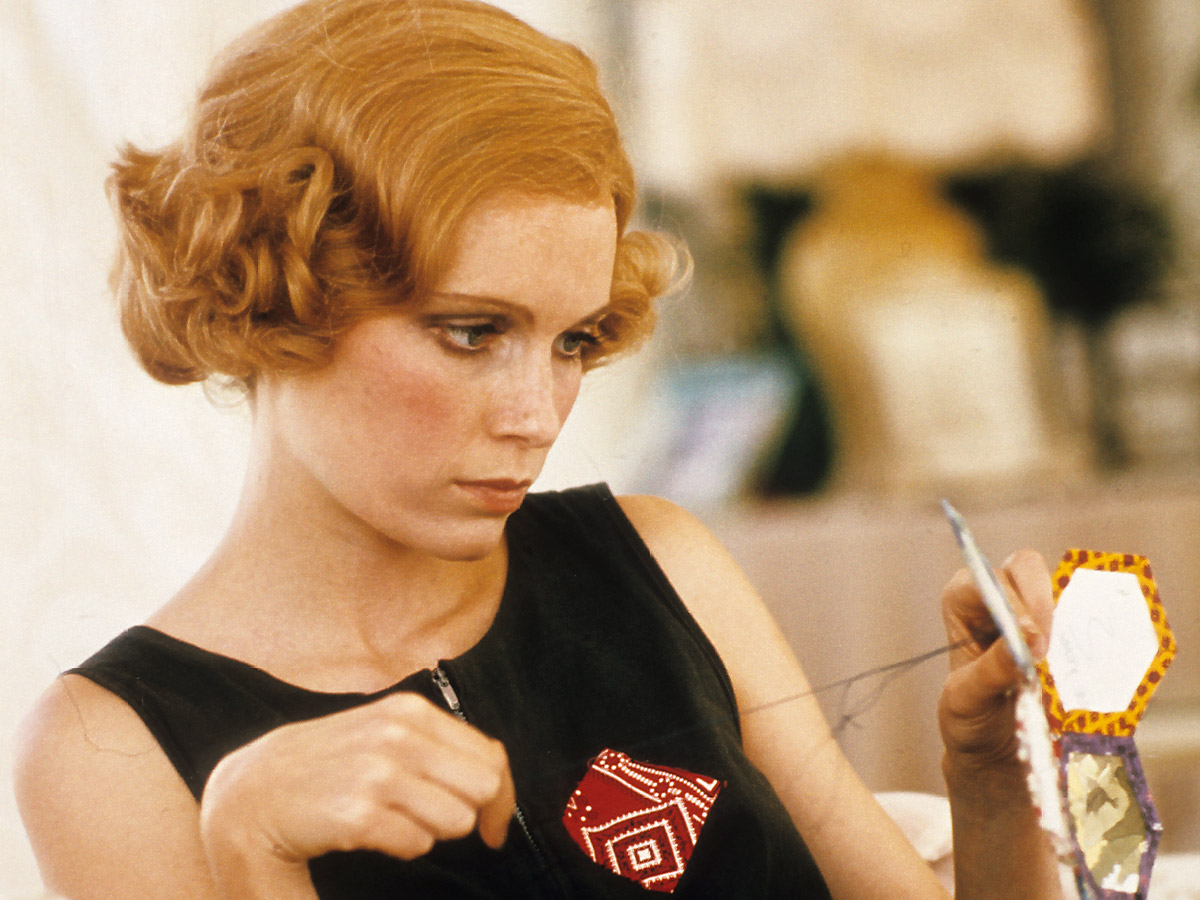
In the 1970s, Mia Farrow became one of Hollywood’s most intriguing actresses, known for her delicate, ethereal presence and diverse film roles. After her breakout in Rosemary’s Baby, she continued to challenge herself in complex parts, starring in films like The Great Gatsby and A Wedding.
Farrow also began her professional and personal partnership with director Woody Allen, starring in his films A Midsummer Night's Comedy and Manhattan. Known for her unconventional beauty and distinctive short hair, Farrow became a fashion icon. Her 70s work cemented her reputation as a versatile and respected actress.
Pink Floyd

In the 1970s, Pink Floyd reached new artistic heights, becoming one of rock’s most influential bands. They released groundbreaking albums like The Dark Side of the Moon and Wish You Were Here, which showcased their progressive sound, philosophical lyrics, and innovative studio techniques.
The Dark Side of the Moon achieved massive commercial success and became a cultural phenomenon, exploring themes of mental illness, time, and existential dread. Later in the decade, Animals and The Wall delved into social critique and personal isolation. Pink Floyd’s '70s era established them as pioneers in concept albums and immersive live performances.
Jane Fonda
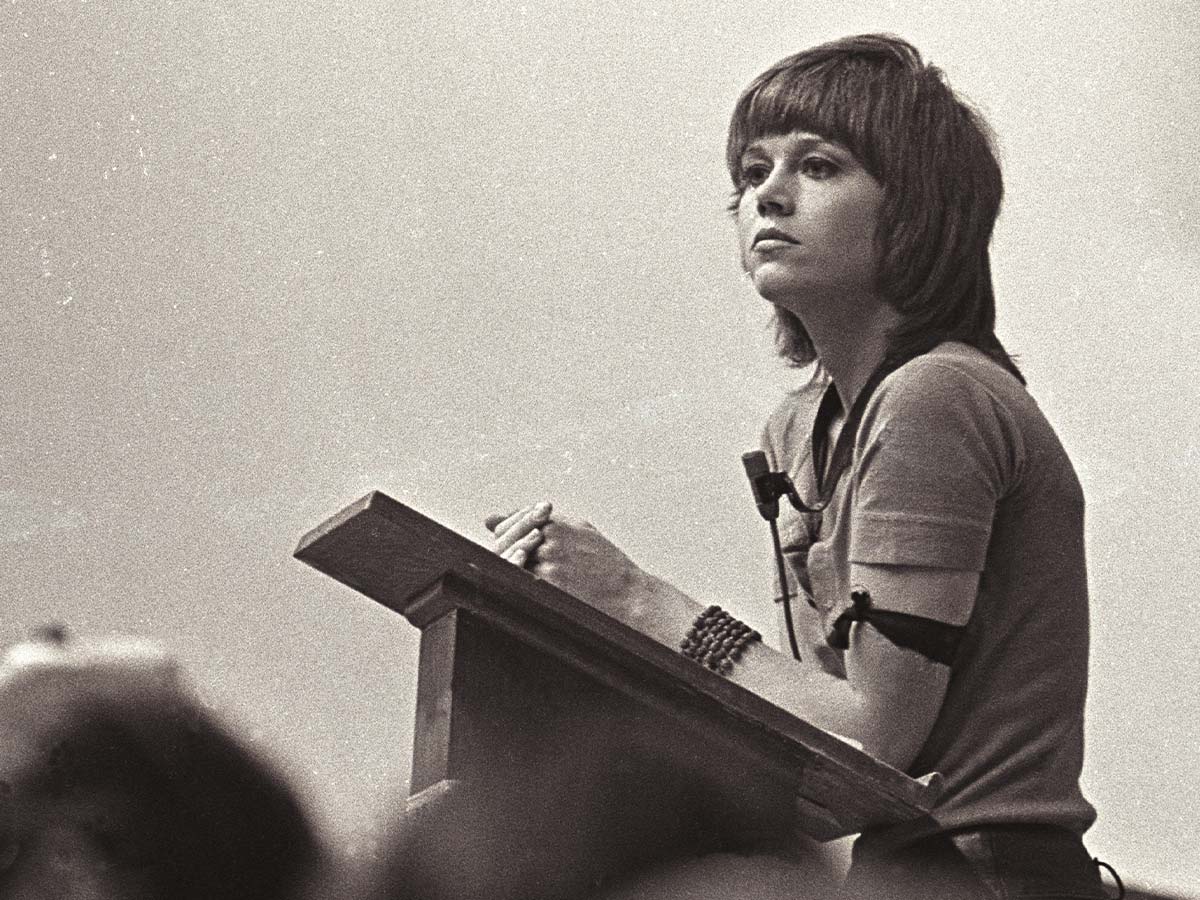
Jane Fonda became known for her outspoken activism, advocating for social and political causes that sparked both support and controversy. Her opposition to the Vietnam War was particularly prominent; she traveled to North Vietnam in 1972, an action that drew intense criticism and led to the enduring nickname “Hanoi Jane.”
Beyond anti-war efforts, Fonda supported civil rights, Native American rights, and feminist causes, often using her celebrity to bring attention to marginalized voices. Though controversial, her activism contributed to the decade's countercultural movements and cemented her reputation as a politically engaged and fearless public figure.
Super Bowl VII
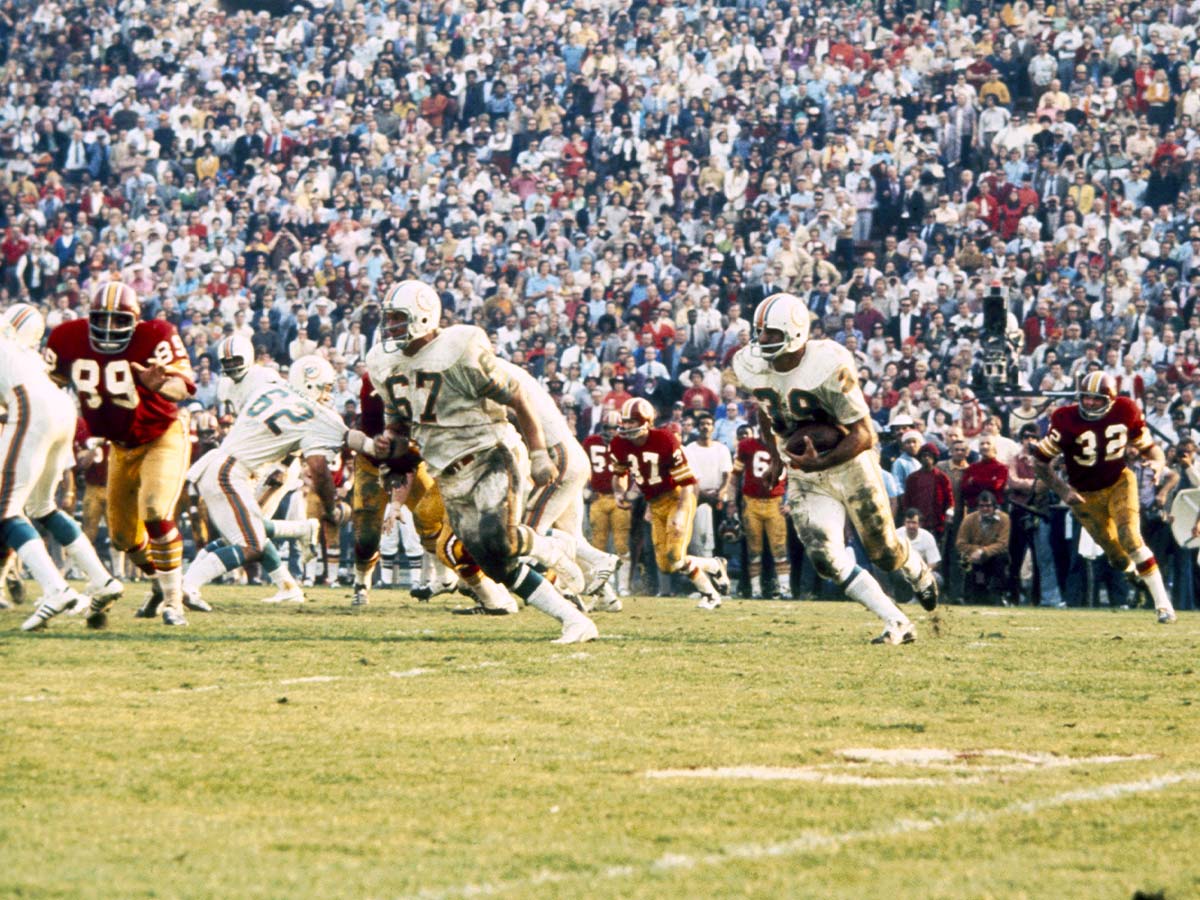
Super Bowl VII, held on January 14, 1973, was significant because it capped the Miami Dolphins' historic perfect season. Facing the Washington Redskins, the Dolphins secured a 14-7 victory, making them the first and only NFL team to complete a season undefeated, including playoffs, with a 17-0 record.
Coached by Don Shula and led by key players like quarterback Bob Griese and fullback Larry Csonka, the Dolphins dominated with strong defense and efficient offense. The game’s most memorable moment was Dolphins kicker Garo Yepremian's infamous failed pass attempt after a blocked field goal, nearly costing them the shutout but sealing an unforgettable legacy.
1973 Fuel Crisis
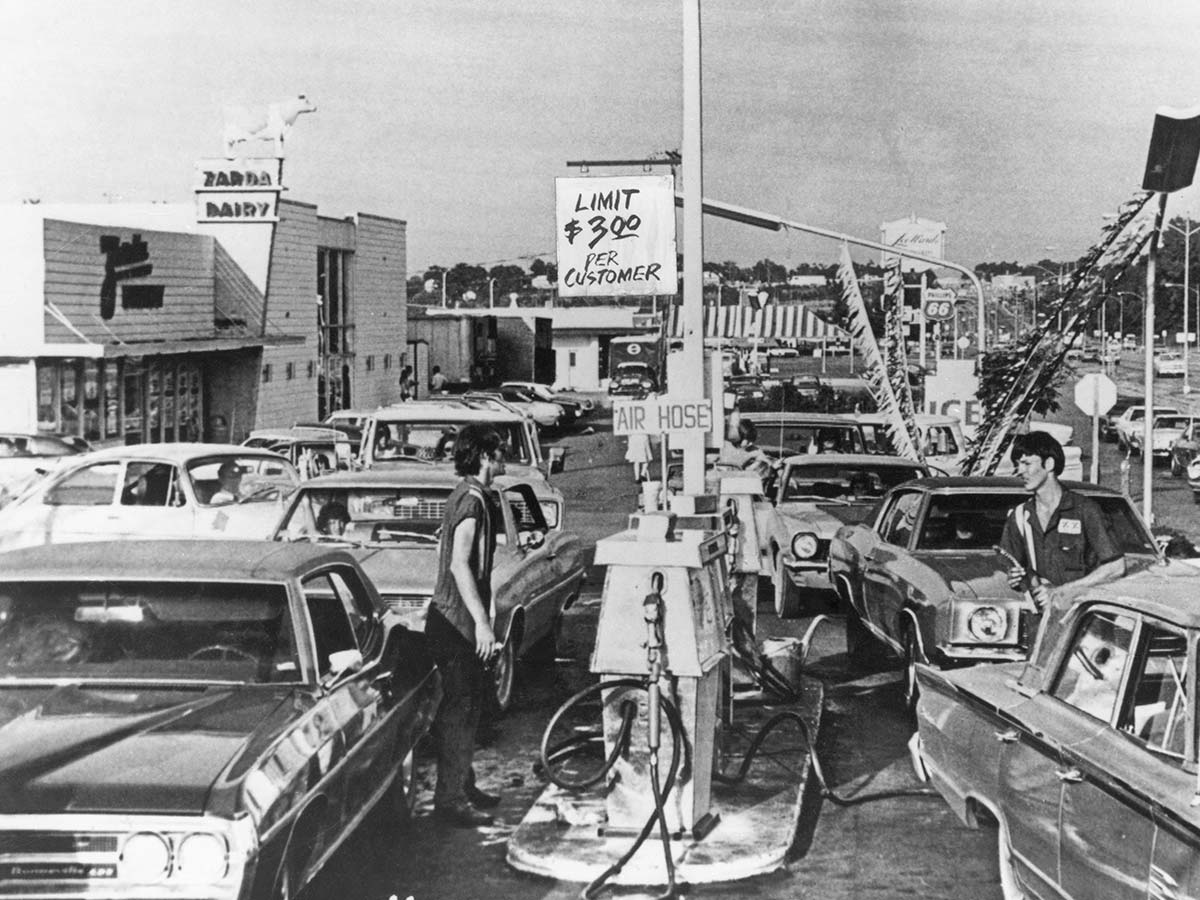
The fuel crisis of the 1970s, especially the 1973 oil embargo, had profound effects on global economies and lifestyles. Triggered by OPEC's decision to cut oil exports to the U.S. and other nations supporting Israel during the Yom Kippur War, oil prices quadrupled nearly overnight, creating severe shortages.
Long lines at gas stations became common, and the crisis forced governments to introduce rationing and speed limits to conserve fuel. It marked a shift toward smaller, fuel-efficient cars, impacted inflation, and led to widespread economic hardship. The crisis underscored the world's dependence on Middle Eastern oil and spurred interest in alternative energy.
The Rise of Apple

In the 1970s, Steve Jobs, alongside Steve Wozniak and Ronald Wayne, co-founded Apple Computer, Inc., launching a tech revolution from a garage in Cupertino, California. In 1976, they released the Apple I, a personal computer kit built by Wozniak and marketed by Jobs.
Its success allowed for the development of the Apple II in 1977, one of the first highly successful mass-produced microcomputers, known for its ease of use and sleek design. Jobs' vision for user-friendly, elegantly designed technology set Apple apart and paved the way for the personal computer industry, making Apple a significant player in tech innovation.
Ted Bundy

In the 1970s, Ted Bundy committed a series of murders that shocked the nation, targeting young women across multiple states, including Washington, Utah, and Florida. Known for his charisma, Bundy used charm to lure his victims, often posing as injured or in need of help.
His criminal activity peaked in 1978 when he escaped custody twice, ultimately attacking a Florida sorority before being recaptured. Bundy’s crimes, and his ability to evade capture, highlighted gaps in law enforcement coordination across state lines. He was convicted and sentenced to death in 1979, marking the end of a chilling chapter in American criminal history.
Blizzard of '78

The New York City blizzard of 1978 was part of a series of severe snowstorms that swept the northeastern United States in early February, paralyzing cities and towns. While New York experienced heavy snow, it was less severe than in Boston and Providence, where accumulation reached historic levels.
In New York, however, the blizzard still caused significant disruptions: businesses closed, transportation halted, and residents faced shortages of supplies. The storm highlighted the city's vulnerability to extreme weather and prompted improvements in emergency response and infrastructure for future snow events, leaving a lasting impact on winter preparedness in the Northeast.
Unemployment in the 1970s
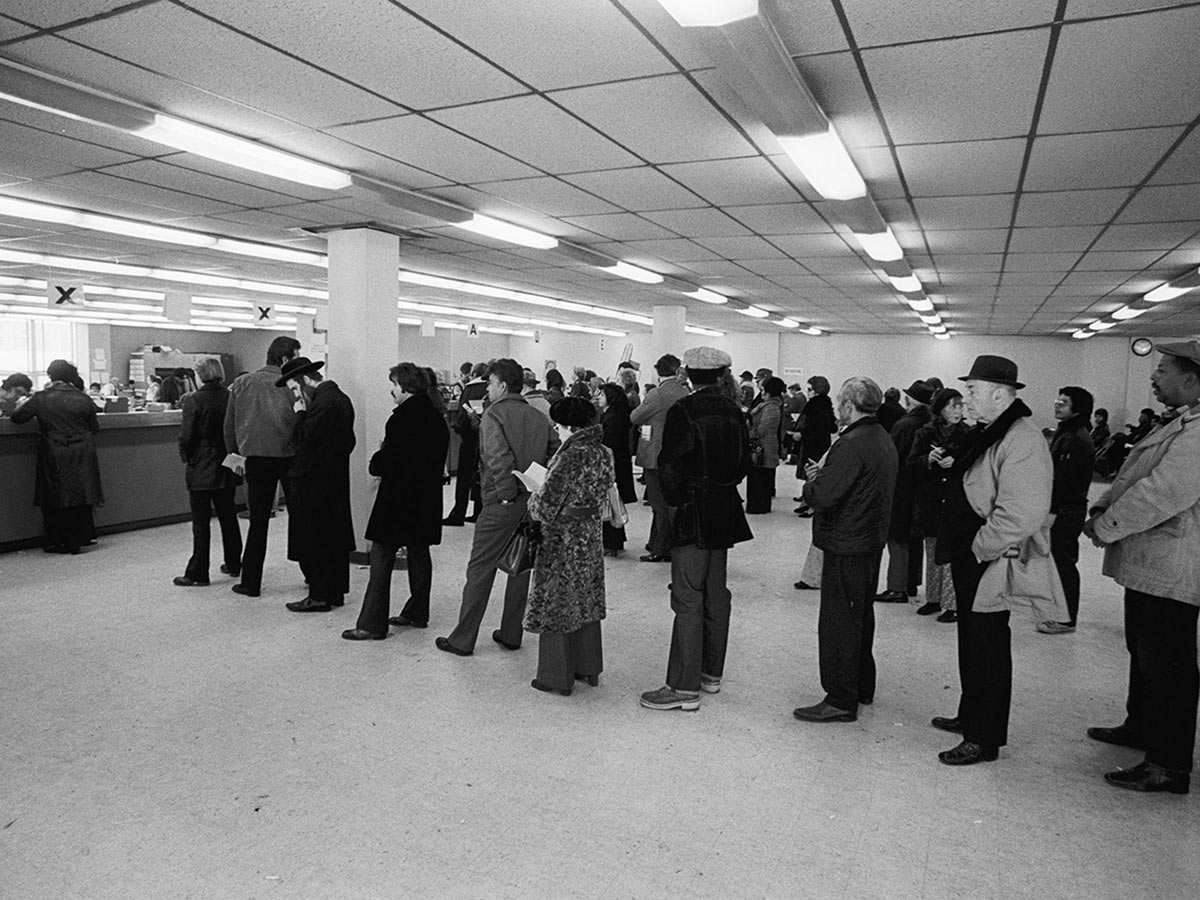
Unemployment in the U.S. during the 1970s was volatile, shaped by economic challenges like inflation, the oil crisis, and deindustrialization. Early in the decade, unemployment rates were relatively low, around 4-5%. However, the 1973-1974 oil embargo triggered inflation and a recession, leading to rising unemployment, which peaked at 9% in 1975.
Although rates improved slightly mid-decade, inflation remained high, contributing to “stagflation,” a combination of stagnant growth and inflation. Toward the late '70s, unemployment rose again, reaching 6-7% by 1980. The economic instability of the decade prompted major policy discussions about inflation control, economic reform, and job creation.
Blackout of 1977

The New York City blackout of 1977 occurred on July 13-14, plunging the city into darkness during a period of economic strain and high crime rates. Triggered by lightning strikes that damaged power lines, the blackout lasted 25 hours and led to widespread looting, arson, and vandalism, particularly in economically struggling neighborhoods like Bushwick and the South Bronx.
Police were overwhelmed, and over 1,000 fires were set, with thousands of businesses damaged. The event highlighted deep social and economic tensions in the city, contrasting sharply with the relative calm during the 1965 blackout and leaving a lasting impact on urban policy and crime prevention.
The Peoples Temple
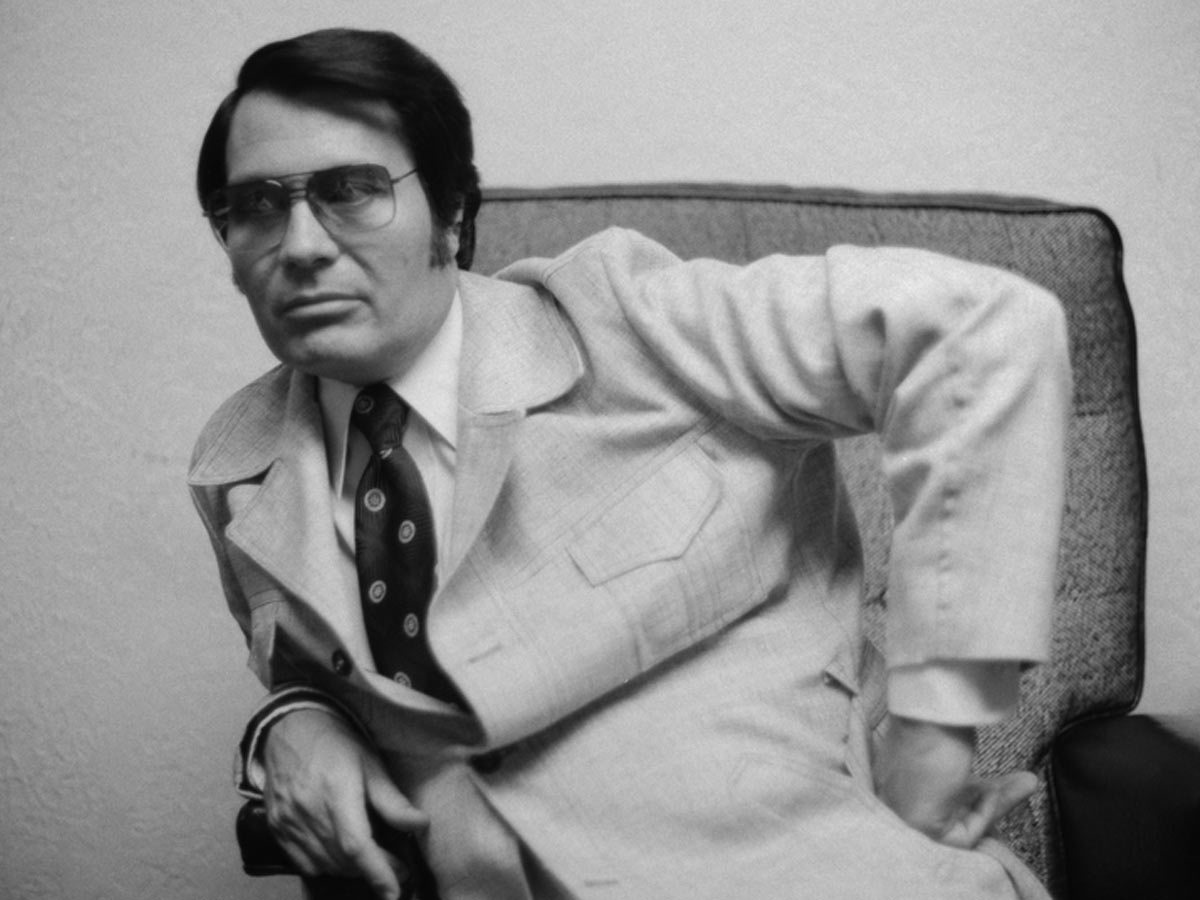
The Peoples Temple, led by Jim Jones, began in the 1950s as a progressive church focused on racial equality and social justice. By the 1970s, Jones had amassed a devoted following, establishing a communal settlement called Jonestown in Guyana, where he promised a utopian society.
However, conditions deteriorated, and reports of abuse emerged. In November 1978, U.S. Congressman Leo Ryan visited Jonestown to investigate, but he and others were killed as they attempted to leave. Under Jones’ direction, over 900 members died in a mass murder-suicide. The tragedy shocked the world, revealing the dangers of cult manipulation and authoritarian leadership.
Harvey Milk
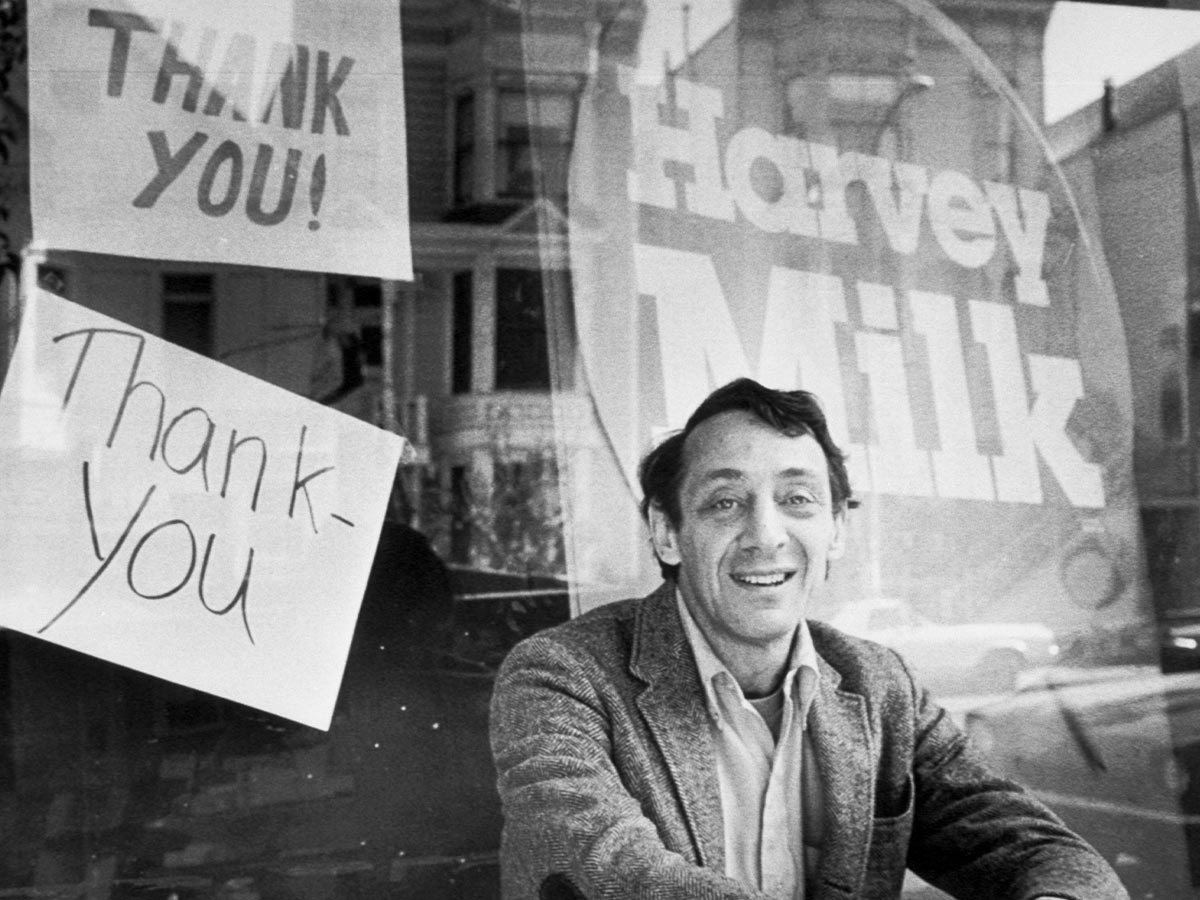
Harvey Milk was a groundbreaking figure in American politics and LGBTQ+ rights, becoming one of the first openly gay elected officials in the U.S. when he won a seat on San Francisco's Board of Supervisors in 1977.
Known for his charisma and passionate activism, Milk advocated for LGBTQ+ rights, affordable housing, and protections for marginalized communities. His influence grew rapidly, symbolizing hope and progress for the gay rights movement. Tragically, Milk was assassinated in 1978 by former city supervisor Dan White.
Three Mile Island

The Three Mile Island accident occurred on March 28, 1979, at the Three Mile Island Nuclear Generating Station in Pennsylvania, marking the worst nuclear power accident in U.S. history. A mechanical failure, combined with operator error, caused a partial meltdown in one of the reactors, releasing small amounts of radioactive gases into the atmosphere.
Although no direct injuries occurred, the incident caused widespread fear, raised health concerns, and highlighted risks in nuclear safety protocols. The accident led to stricter regulations, a halt in new nuclear plant construction, and a shift in public opinion, sparking debates about nuclear energy's safety and future in the U.S.
Margaret Thatcher Wins
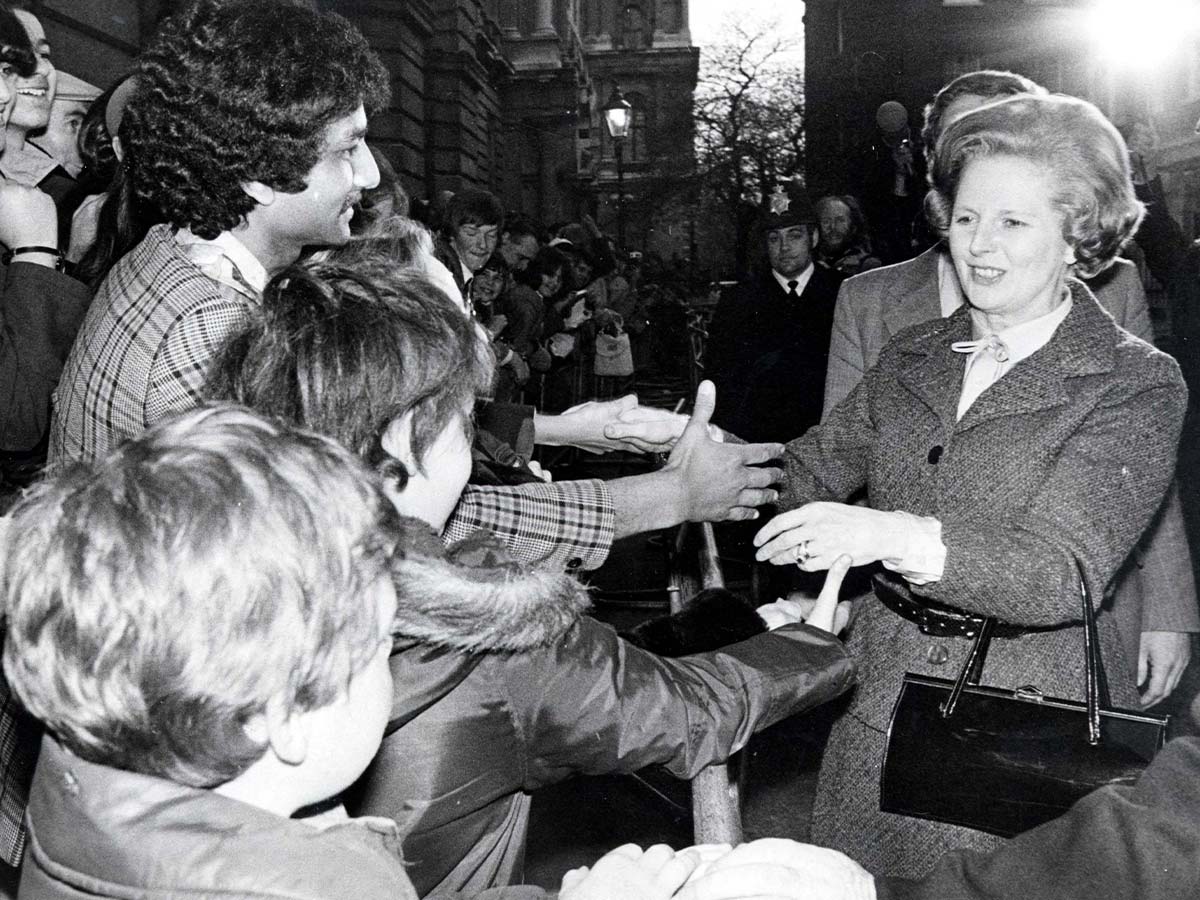
Margaret Thatcher became Britain’s first female Prime Minister in May 1979, representing the Conservative Party. Her victory marked a shift from the post-war welfare state toward a more market-oriented approach, often called “Thatcherism.”
Inheriting an economy troubled by inflation, high unemployment, and union strikes, Thatcher promoted policies aimed at reducing government intervention, curbing union power, and privatizing national industries. Her election symbolized a new conservative wave in Western politics, alongside figures like Ronald Reagan in the U.S. Thatcher’s leadership deeply impacted British society, earning both ardent support and significant opposition, and set the tone for her transformative 11-year tenure.
 Author
Ron Winkler
Last Updated: November 29, 2025
Author
Ron Winkler
Last Updated: November 29, 2025